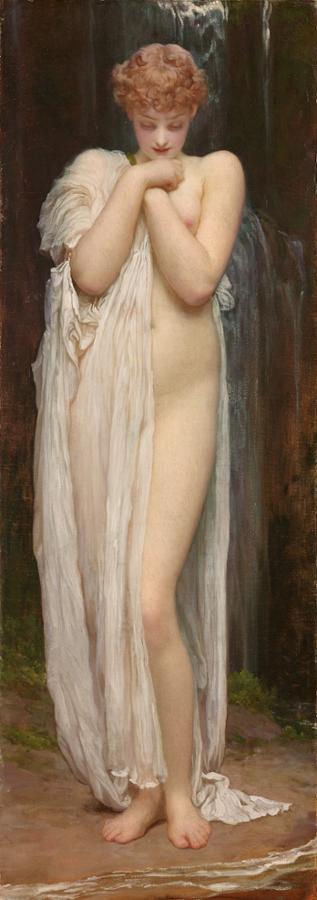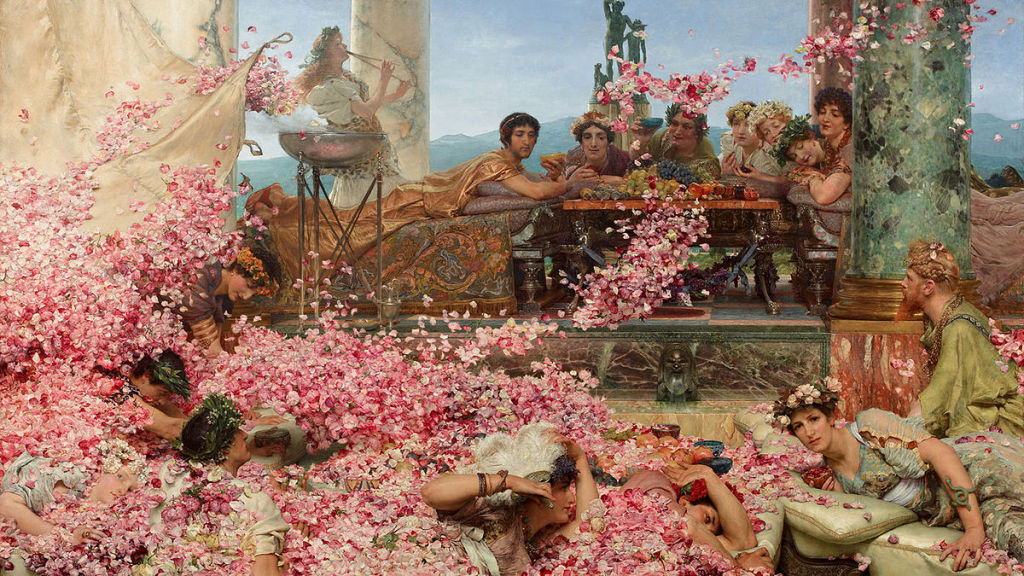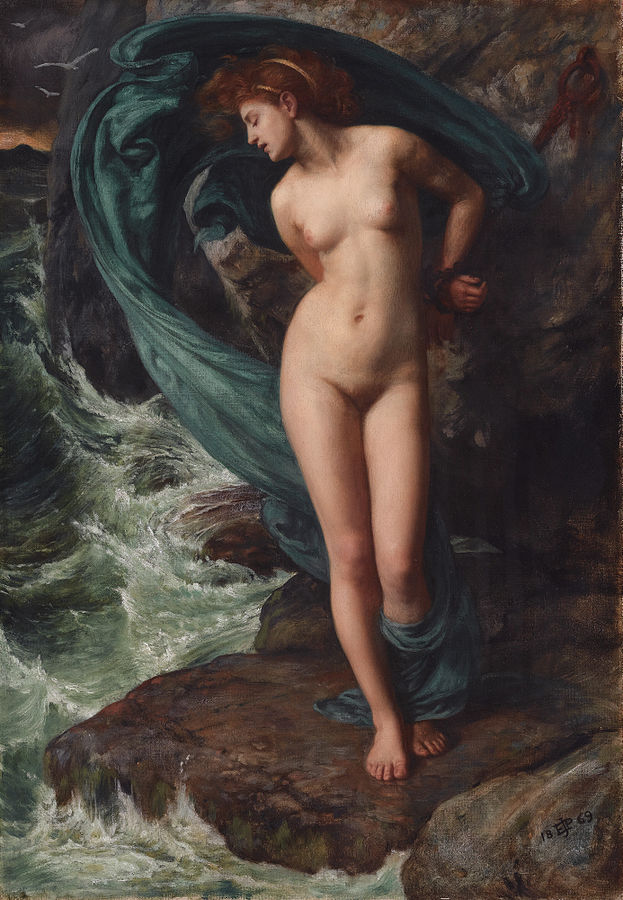A Victorian Obsession: The Peréz Simón Collection
Leighton House Museum, London
14th November 2014 – 29th March 2015
Telecommunications billionaire Juan Antonio Pérez Simón is showing a selection of his Victorian paintings at Leighton House Museum, a place which I am ashamed to say was unknown to me before now. Frederic Leighton (1830 – 1896) is a name is synonymous with that visual Victorian interpretation of the classical which depicts idealised beauty in clean, bright Mediterranean light with dazzling detail. In his day he was one of the most popular artists around, he had won prestigious awards and had an international reputation. Being by all accounts a charming and cosmopolitan sort of a fellow his social circle consisted of some of the most eminent cultural figures of the time. Leighton House was his home. From the outside the building is unassuming and modestly sized, but the red bricks conceal a jewel box-like interior with marble pillars, gilt ceilings and tiled walls, it is a visual culmination of Leighton’s artistic passions. Inside the entrance a domed ceiling covers a peaceful fountain with a distinct Arabic feel, yet the Corinthian topped-columns and mosaic floor are purely of Ancient Roman design. Far from looking tacky and inauthentic it is a beautiful place and gives a real sense of the artist’s personality. It is unique in that the building was designed by the artist who was to live, work and die there, and served as a gallery for his own work as well as his acquired pieces. Leighton held gatherings and concerts in the house for his high society associates, so it must have been a hive for exchanging creative and intellectual ideas. His friends included the Pre-Raphaelite Brotherhood and the Holland Park members such as G. F. Watts.
One work by Leighton on display is Crenaia, the Nymph of the Dargle (1880). It is a very beautiful image, modest and sensitive but with a spark of sexual charge. The model was Dorothy Dene who was Leighton’s muse and close friend in his later years. From a poor family she was 19 when she met the 50 year old artist, and he nurtured and educated her. She turned her hand to acting and became something of a celebrity in the 1880s, but has been immortalised by Leighton’s images of her. In this one she is posed as Crenaia, nymph of the Irish River Dargle, which flowed across patron Lord Powerscourt’s estate. As with many of Leighton’s works it is less about narrative and more about aesthetic. Beauty is at the core of the work. And she is a beauty, an English rose, pale and young and sensual. Her long slender figure is in that classic contrapposto pose, which emphasises her curves. Her hands are clasped under her chin in a futile attempt to cover her modesty and hold up her shift which is falling seductively from her shoulder. The material is white and sheer, imitating the cascading water behind her. What does the image mean? Is it important? A desire to create beautiful images, ‘art for art’s sake’, was reason enough to paint. This attitude is a product of the time which came with the establishment of the British Empire in the late Victorian era. The wealth and power the expansion brought provoked comparisons to the great Roman Empire. The British painting of social history did not reflect the new positivity of the age, but this celebrated it.

Crenaia, the Nymph of the Dargle (1881) by Frederic Leighton, oil on canvas, The Juan Antonio Pérez Simón Collection
Andromeda (1869) by Edward John Poynter was one of the paintings I was most looking forward to seeing. Although it was smaller than I imagined it was more energetic and beautiful (apologies, the reproduction below is not a good one). I love the contrast of textures and colours; the soft, creamy curved female form, the shimmering and vivid teal coloured drapery that catches in the sea wind, the craggy rocks she is bound to and the tumultuous waves that surround her. The sunsets low behind a volcanic horizon, adding to the atmosphere of impending doom, the seagulls circle and squawk in warning. Our heroine Andromed stands in that wonderful contraposto, fully nude except for the edge of the material which clings to her left ankle and creates a shell-like shape around her body. Hands chained behind her she turns her head, showing us her classically perfect profile. The story comes from Greek mythology, but this woman is not Greek. Her pale skin and bronze hair betray her. She being sacrificed to a sea monster because her mother boasted that her beauty was beyond compare. Rather unjust, but luckily there is a happy ending beyond this scene, the gallant Perseus saves her just in time. Despite no visual threat the painting is moving. Versions of this by the likes of Veronese, Titian and Rubens are more literal, full of action and including weird dragonesque creatures. In comparison Poynter’s Andromeda is resigned to her fate in a graceful reflection, composedly accepting the burden of her beauty and the stupidity of her mother.
I have to mention this painting if only because it defies the paint it is made of, and I must apologise for poor image below. In reality is is so clear, tactile and detailed. Alma-Tadema could have made impressionistic daubs of colour to depict the hundreds of flower petals, but instead each individual one is defined. The walls around it are hung with photographs and drawings used by the artist to paint the furniture and ornaments, and the room whole room was pumped with a glorious Jo Malone rose fragrance. A frivolous and totally commercial concept, yes, but a wonderful one which further immerses you in the scene. The depth and movement in it lead the eye around in a dance-like fashion, further emphasised by the music being played by the girl in the background. The petals to the right which have been caught by the breeze are particularly lovely. However, the scene is not a happy one. Heliogabalus, or Elagabalus, became Emperor of Ancient Rome at the age of 14 and is primarily remembered for sexual decadence and religious upheaval. Needless to say he didn’t last long, just four years in fact. The great writer of ancient history Edward Gibbon said of the Emperor that he “abandoned himself to the grossest pleasures and ungoverned fury.” And this painting shows one such act. Bored of his guests and looking to be entertained he supposedly unleashed a tidal wave of rose petals on them from a secret panel in the ceiling. We see the Heliogabalus dressed in gold at the centre, laid out on a chaise longue enjoying the scene from on high. The guests fortunate enough to be sitting with him also spectate and look curiously unbothered, as if this were a daily occurrence. As for those about to smothered they too look rather more calm than I would. Two appear to struggle on the left-hand side, but the others don’t seem to mind too much. I love the expression of the lady on the right who looks out at us, although I really cannot fathom what she is saying.

The Roses of Heliogabalus (1888) by Lawrence Alma-Tadema, oil on canvas, The Juan Antonio Pérez Simón Collection
To be able to see works which have not been publicly exhibited in over 100 years is a rare opportunity, and all the more so because they are privately owned. The perfect setting of Leighton House makes it an exceptionally encompassing experience of art history. Wealth isn’t always synonymous with good taste, but Mr Pérez Simón chose to invest in the art that he loves which he is sharing with the public, and for this I am very grateful.

